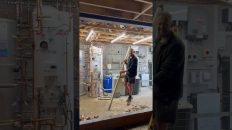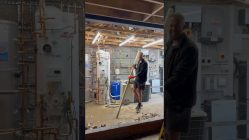IGEM Guidance on CO alarm activation and fumes report. https://www.kane.co.uk/news/new-igem-guidance-on-co-alarm-activation-fumes-report?utm_medium=email&_hsmi=208669017&_hsenc=p2ANqtz-9IuqYahud3VqGYM6F4fgweD-7pyRM1f8bs3h0Gp7-rzudhSDO9iCzhJwLMzFfFChvpDS28VZbZ3Hwaie7we6F0Z03eSA&utm_content=208438832&utm_source=hs_email
National Gas Centre For Excellence NGCFE
Carbon Monoxide Alarm.
As gas engineers, it can be daunting when we are asked to attend a property in which a CO alarm has activated or where a customer believes they have been affected by CO poisoning.
BS7967 is the British standard that provides guidance on combustion flue gas analysing and also the relevant procedures for testing for correct combustion or CO within properties.
Engineers who hold CCN1 also hold CPA1. This competency allows engineers who hold CCN1 to be able to carry out an initial investigation which in most cases will be able to ascertain the source of the alarm activating or the suspected fumes within the property.
Kane have recently released some guidance (provided by IGEM) that breaks down the correct procedure for engineers who may not hold CMDDA1 or a relevant competency relating to fumes investigation. This allows engineers with CCN1 to deal with such situations with confidence.
The procedure involves engineers carrying out relevant visual and physical tests and sweep testing any appliances identified as suspect during interviewing the customer and visual inspections.
If following the engineer’s investigation, the source of the CO alarm activating or the customers symptoms has not been identified, then an engineer with competency in fumes investigation etc should be instructed to attend.
Should you wish to attend the centre for training or wish to discuss your needs further, then please contact hello@ngcfe.co.uk or call 01924973260







